rich815
Yamadori
Hello all,
Took a hike this afternoon around at a local closed country club golf course up in the East bay hills with my wife and 9-yr old daughter. We really needed to get some fresh air and exercise during this shelter-in-place situation here in the San Francisco Bay Area. In a weedy border area of the golf course between a long fairway and the public road I found a small pine and a few juniper seedlings. I’m fairly certain the pine is a pine as it was at the base of a huge 60’ pine (and I have a few pine seedlings already so I recognize that) but right next to that seedling were a few juniper seedlings, or what looks like junipers (or cedars?). All three look the same type. They were all right where people walk and a couple were damaged from likely being stepped on. They were in amongst many weeds right next to the road median so I didn’t feel bad about digging them up. Random weeds in the true sense.
Anyway, photos below. Can anyone confirm if these are junipers? Or cedars? There were some tall cedars and juniper bushes but way on the other side of the fairway of this hole, at least 100 yards or so away from where I found these. Hope to keep them growing and make them into bonsai eventually. My first yamadori....I guess!
The pine
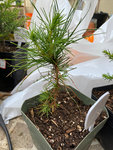
And the three junipers
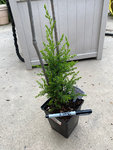
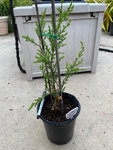

and some close up of what I think are juniper/cedar types:
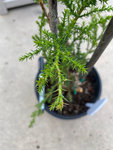
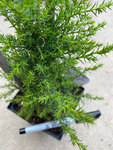
Took a hike this afternoon around at a local closed country club golf course up in the East bay hills with my wife and 9-yr old daughter. We really needed to get some fresh air and exercise during this shelter-in-place situation here in the San Francisco Bay Area. In a weedy border area of the golf course between a long fairway and the public road I found a small pine and a few juniper seedlings. I’m fairly certain the pine is a pine as it was at the base of a huge 60’ pine (and I have a few pine seedlings already so I recognize that) but right next to that seedling were a few juniper seedlings, or what looks like junipers (or cedars?). All three look the same type. They were all right where people walk and a couple were damaged from likely being stepped on. They were in amongst many weeds right next to the road median so I didn’t feel bad about digging them up. Random weeds in the true sense.
Anyway, photos below. Can anyone confirm if these are junipers? Or cedars? There were some tall cedars and juniper bushes but way on the other side of the fairway of this hole, at least 100 yards or so away from where I found these. Hope to keep them growing and make them into bonsai eventually. My first yamadori....I guess!
The pine

And the three junipers



and some close up of what I think are juniper/cedar types:



